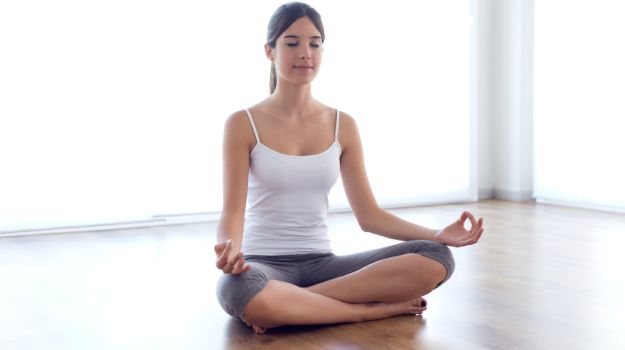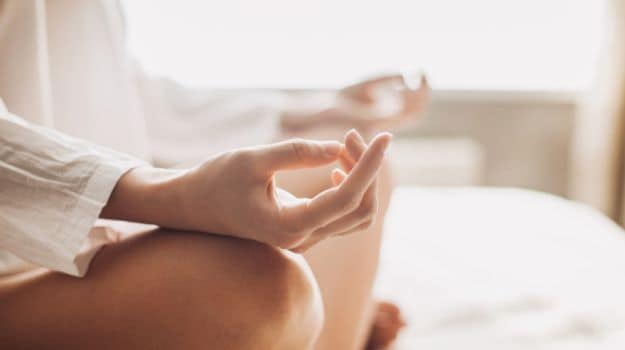How to Breath Correctly During Yoga: A Step-by-Step Guide

Right at the center of human existence lies breathing. We wouldn’t exist if we didn’t breathe. One of the most common and basic processes of the human body, the act of breathing, remains wrapped under ignorance. In this feature, we attempt to get to the core of yogic practice – the significance of breathing and how to master it.
Breathing influences the activities of each and every cell in the body and is linked to the performance of the brain. It is said that humans breathe about 15 times per minute, close to 21,600 times per day. Each breath is intimately linked to all aspects of human experience. “I feel most people breathe incorrectly. They use only the small part of their lung capacity. As the breathing is shallow, it deprives the body of oxygen and prana, which are essential to one’s good health,” feels yoga expert Anju Kalhan.

Breathing exercises form the core of yogic practices. They aim to create a harmony and balance within the body, and at times detoxify the system as well. While breathing correctly and practicing breathing techniques have benefits manifold, irregular or incorrect breathing can harm the body in many ways. “Rhythmic, deep and slow respiration stimulates the mind and makes it stress free. However, irregular breathing disrupts the rhythms of the brain and leads to physical, emotional and mental blocks. This may often lead to inner conflicts, unbalanced personality, disordered lifestyle and many diseases,” shared Ms. Kalhan.
Yoga and Breathing Patterns
Under this section not only shall we learn about the ‘correct’ way of breathing in various yogic postures, but also simplify the varied forms of breathing techniques, their significance, as well as their benefits to the human body. Yogi Anoop from the Chaitanya Foundation, Mediyoga, explains the typical yogic breathing as the one where “when you inhale, your stomach swells out, followed by your chest and while you exhale your stomach goes in, followed by your chest”. This is a deep breathing exercise wherein you soak in maximum oxygen filling in your stomach first followed by the chest and vice versa during exhalation.

There are many benefits of practicing the yogic breathing. It is a way to slowly oxygenate your body putting your mind to peace and relaxation.
Ms. Kalhan divides the traditional yogic breathing patterns into four categories:-
1. Abdominal or diaphragmatic breathing: When you breathe long and deep in the abdomen; focusing on expansion of the stomach while inhalation and squeezing the stomach in while exhalation.
2. Thoracic breathing: When you breathe into the lungs upwards and outwards. While doing this, you become more aware of the expansion of the lungs, drawing in air and dropping the lungs as you exhale.
3. Clavicular breathing: When you breathe into your lungs until the expansion is felt in the upper portion of the lungs around the base of the neck. The shoulder and the collar bone also move up. Exhalation is slow releasing from the base of the chest and then the neck.
4. Yogic breathing: She explains this type of breathing as an amalgamation of all of the above in single inhalation. You breathe slow and long, filling up the abdominal area, the chest area as well as the shoulder and the neck areas. You finally begin to release from the stomach first and then the chest followed by the shoulder and the neck.

Yogic breathing is best suited for meditation and can be done while lying down or sitting. Total awareness should be on the breath, ultimately relaxing the mind and body. The breath should flow naturally and not be forced.
“In my opinion, yogic breathing is a great way to relieve conditions like sinus, lungs and heart issues as well as digestive disorders, stomach ailments, stress and respiratory troubles,” said Mithilesh Kumar, M.A in Yoga, Yoga expert.
Breathing Asanas
Apart from yogic breathing, there exists varied asanas which incorporate different breathing techniques. Yogi Anoop throws some light on these differing breathing techniques.
1. Kapalbhati– The sneezing breathing technique, as some may call it, this asana has been drawn from the process of sneezing. While you force-exhale your breath out of your lungs, you are cleansing your frontal brain area and generating heat in the body. “All breathing exercises or techniques that have sound in them and are based on exhalation are great for detoxification. Apart from kapalbhati, bhasrika is another example of such kind of breathing,” noted Yogi Anoop.
2. Alternate Nostril Breathing – Here we are referring to left-to-left nostril breathing and the other way round. Left-to-left nostril breathing, also known as Chandrabhedi Pranayama, is a water dominated asana, which has cooling effect on the body. It activates the right side of the brain and is great in relieving hypertension, excessive heat and relaxing the nervous system. The opposite of this would be right-to-right nostril breathing known as Suryabhedi Pranayama. As the name suggests, this technique is fire dominated and heats up the system. Alternate nostril breathing, popularly known as Anulom Vilom, is great for balancing and relaxing the nervous system.
3. Sheetali Pranayam – This involves breathing in through your tongue which is rolled out like a tube. As you inhale the air, close your mouth and exhale normally through the nostrils. “This is great in lowering your BP, and excellent for the summer,” shared Yogi Anoop.
4. Breathing Retention – Many yogic postures involve breathing retention or holding the breath for a few seconds. This is excellent for strengthening and enhancing the lung capacity. This also facilitates better and greater absorption of oxygen. “While you retain your breath, you supply more oxygen to various parts of the body, in such a case while under stress your brain cells and other organs are better equipped to handle the pressure with the help of more oxygen,” concluded Yogi Anoop.
Things to Keep in Mind
A few things that are worth keeping in mind while doing any asanas would be:
1. Always inhale while in the center position
2. While bending sideways, exhale
3. Forward bending, exhale
4. Whenever the body goes out of the center, you exhale
5. This would be with exception to backward bending, where you inhale
6. “Those who suffer from high blood pressure or heart issues should not attempt breath retention,” said Mithilesh Kumar.
The quality of your life as well the length of it depends on the breaths you take and how you breathe. “Where the breathing is short, the lifespan is likely to be shorter than where the breath is slow and deep. This is because the respiration is directly related to the heart. Deep breathing also increases the absorption of energy enhancing dynamism vitality, promoting general well-being,” concluded Ms. Kalhan.
[“source-ndtv”]
